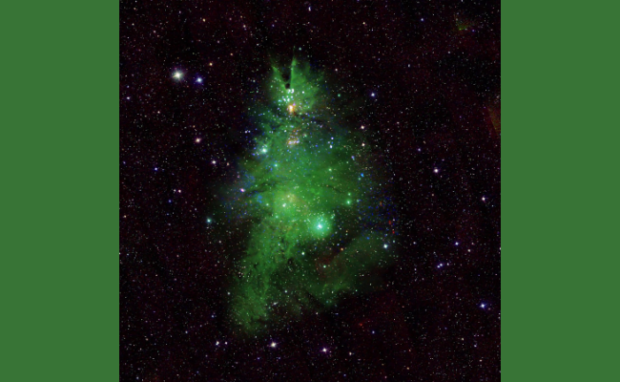NASA finds ‘Christmas Tree Cluster’ in space
NASA took a photo of a group of stars resembling the shape of a Christmas tree. Special gases constituted the green pine needle-like shapes of the interstellar holiday symbol. Also, the stars served as the fairy lights and ornaments. The National Aeronautics and Space Administration’s Chandra X-ray Observatory captured these wondrous photos.
It’s cool that even the universe seems to be celebrating the holidays. It’s a great thing to observe to further improve the festive mood. More importantly, it could boost global interest in heavenly bodies such as stars and nebulas. After all, wouldn’t you like to know how outer space formed such an interesting shape?
This article will discuss how a seemingly random bunch of interstellar objects created the “Christmas Tree Cluster.” Later, I will show you other recent space discoveries.
What is the Christmas Tree Cluster?

Photo Credit: nasa.gov
NASA calls it NGC 2264, a cluster of stars in the Milky Way galaxy aged roughly one and five million years old. Its stars are smaller and larger than the Sun; some are a tenth of the Sun’s mass, and others exceed it sevenfold.
The star cluster looks like holiday vegetation because of its color and rotation. Its blue and white lights are young stars that emit X-rays detected by NASA’s Chandra X-ray Observatory.
Optical data from the National Science Foundation’s WIYN 0.9-meter telescope on Kitt Peak shows green nebula gas, which looks like the “pine needles” of a Christmas tree. Also, the Two Micron All Sky Survey infrared data shows foreground and background stars in white.
NASA rotated the image roughly 160° from the astronomer’s standard of North, pointing upward. As a result, the top of the tree is toward the top of the image.
The space agency also released an animated version that depicts the stars blinking simultaneously. It only added the visual effect for emphasis because stars emit X-rays in different intervals.
NASA says there are many reasons for these variations. Some lights come from magnetic fields, such as solar flares. Others are from the hot spots and dark areas that go in and out of view as stars rotate.
The flickering lights may also come from the changing gas thickness obscuring stars. Moreover, some materials are still falling onto the stars, making them shimmer from a distance.
NASA found another weird shape in space aside from the Christmas Tree Cluster: a question mark! Its James Webb Space Telescope team at the European Space Agency published of two developing stars 1,470 light years away from Earth.
JSWT names the stars Herbig-Haro 46 and 47. We have not confirmed what these objects are at the time of writing, but some researchers shared their ideas.
Space Telescope Science Institute (STScI) representatives told Space.com, “It’s probably a distant galaxy or potentially interacting galaxies (their interactions may have caused the distorted question mark shape).”
“This may be the first time we’ve seen this particular object. Additional follow-up would be required to figure out what it is with any certainty. Webb is showing us many new, distant galaxies – so there’s a lot of new science to be done!” the experts added.
STScl says the object’s red color suggests it is far away. More importantly, it is the first cosmic question mark astronomers have seen. Also, Illinois State University professor Matt Caplan told the space news outlet that the NASA question mark could be two galaxies merging.
“The two distinct could easily be merging galaxies in the background, with the upper part of the question mark being part of a larger galaxy getting tidally disrupted.”
“Given the color of some of the other background galaxies, this doesn’t seem like the worst explanation. Despite how chaotic mergers are, double-lobed objects with lobed objects with curvy tails extending away from them are very typical.”
The professor thinks it could depict other heavenly bodies, except a star. Caplan explained it lacks the eight-pronged refraction spikes that starlight emits when it hits telescope mirrors.
Conclusion
NASA discovered a group of stars that resemble a Christmas tree. Its nebula gases make up the tree’s green foliage, and stars twinkle as its ornaments.
It’s a quaint heavenly body, especially because the space agency found it during the holidays. Nevertheless, it’s cute to know that the universe seems to be celebrating with us!
This year brought us numerous outer space breakthroughs. Learn more about those discoveries before the year ends at Inquirer Tech.
RELATED STORIES
WATCH: NASA shares top images of Earth from 2020
NASA astronaut plans to cast her ballot from space station
NASA humanoid robot will oversee oil rigs for remote testing
Disclaimer: The comments uploaded on this site do not necessarily represent or reflect the views of management and owner of Cebudailynews. We reserve the right to exclude comments that we deem to be inconsistent with our editorial standards.
